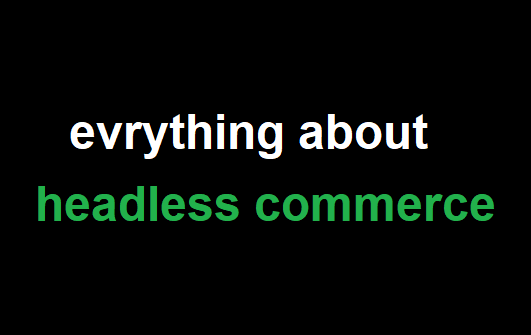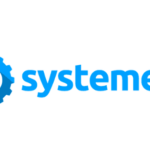headless commerce platforms
Headless commerce is a type of e-commerce platform that separates the front-end user experience from the back-end functionality and infrastructure. This allows businesses to build custom front-end experiences using technologies like JavaScript frameworks or mobile apps, while using the back-end platform to handle tasks like managing products, processing orders, and handling payments. Headless commerce platforms are often favored by businesses that want more control over their customer experience and the flexibility to build custom interfaces and integrations. Some examples of headless commerce platforms include Shopify Plus, BigCommerce, and Salesforce Commerce Cloud.
What is an example of headless commerce?
Here are a few examples of companies that are using headless commerce:
- Gymshark: Gymshark is an online fitness apparel retailer that uses a headless commerce platform to power its e-commerce site and mobile app. By separating the front-end user experience from the back-end functionality, Gymshark is able to build custom interfaces and experiences for its customers, such as personalized product recommendations and integrated social media features.
- Peloton: Peloton is a fitness company that sells exercise equipment and offers streaming workout classes. It uses a headless commerce platform to power its e-commerce site and mobile app, allowing it to offer a seamless and personalized shopping experience for its customers.
- Burberry: Burberry is a luxury fashion brand that uses a headless commerce platform to power its e-commerce site and mobile app. By using a headless approach, Burberry is able to deliver a consistent and high-quality customer experience across all channels, including its physical stores and digital touchpoints.
- REI: REI is an outdoor retail company that uses a headless commerce platform to power its e-commerce site and mobile app. By using a headless approach, REI is able to offer a consistent and personalized customer experience across all channels, including its physical stores and digital touchpoints.
- Williams-Sonoma: Williams-Sonoma is a home furnishings and kitchenware retailer that uses a headless commerce platform to power its e-commerce site and mobile app. By separating the front-end user experience from the back-end functionality, Williams-Sonoma is able to build custom interfaces and experiences for its customers, such as personalized product recommendations and integrated social media features.
- Uniqlo: Uniqlo is a global clothing retailer that uses a headless commerce platform to power its e-commerce site and mobile app. By using a headless approach, Uniqlo is able to deliver a consistent and high-quality customer experience across all channels, including its physical stores and digital touchpoints.
- The New York Times: The New York Times is a media company that uses a headless commerce platform to power its subscription services and e-commerce offerings. By separating the front-end user experience from the back-end functionality, The New York Times is able to build custom interfaces and experiences for its customers, such as personalized content recommendations and integrated payment systems.
headless ecommerce solutions
Headless e-commerce solutions are platforms that allow businesses to build custom front-end experiences using technologies like JavaScript frameworks or mobile apps, while using the back-end platform to handle tasks like managing products, processing orders, and handling payments. Some examples of headless e-commerce solutions include:
- Shopify Plus: Shopify Plus is a headless e-commerce platform that allows businesses to build custom online stores and shopping experiences using APIs and other integration tools. It offers a range of features including inventory management, payment processing, and order fulfillment.
- BigCommerce: BigCommerce is a headless e-commerce platform that offers a range of features including inventory management, payment processing, and order fulfillment. It also provides tools for building custom front-end experiences using technologies like JavaScript frameworks and mobile apps.
- Salesforce Commerce Cloud: Salesforce Commerce Cloud is a headless e-commerce platform that allows businesses to build custom online stores and shopping experiences using APIs and other integration tools. It offers a range of features including inventory management, payment processing, and order fulfillment.
- Magento Commerce: Magento Commerce is a headless e-commerce platform that offers a range of features including inventory management, payment processing, and order fulfillment. It also provides tools for building custom front-end experiences using technologies like JavaScript frameworks and mobile apps.
- OroCommerce: OroCommerce is a headless e-commerce platform that allows businesses to build custom online stores and shopping experiences using APIs and other integration tools. It offers a range of features including inventory management, payment processing, and order fulfillment.
Is Shopify a headless commerce?
Yes, Shopify offers a headless commerce platform called Shopify Plus. With Shopify Plus, businesses can build custom front-end experiences using technologies like JavaScript frameworks or mobile apps, while using the back-end platform to handle tasks like managing products, processing orders, and handling payments. This allows businesses to offer a seamless and personalized shopping experience to their customers, while also giving the company more control over the customer experience and the ability to build custom integrations. Shopify Plus offers a range of features including inventory management, payment processing, and order fulfillment, and is suitable for businesses of all sizes, from small startups to large enterprises.
What is a headless commerce stack?
A headless commerce stack refers to the combination of technologies and tools that a business uses to build and operate a headless e-commerce platform. A typical headless commerce stack might include:
- A content management system (CMS) for managing and storing product and customer data
- An application programming interface (API) for accessing and manipulating data and functionality
- A front-end framework or platform for building the user interface and customer experience
- Integration tools for connecting the front-end and back-end systems
- A back-end platform or set of services for handling tasks like managing products, processing orders, and handling payments
The headless commerce stack allows businesses to build custom front-end experiences while using the back-end platform to handle core e-commerce functionality. This approach gives businesses more control over the customer experience and the ability to build custom integrations and interfaces.
Is Headless CMS good for eCommerce?
A headless CMS can be a good option for e-commerce businesses that want more control over their customer experience and the flexibility to build custom interfaces and integrations. Some benefits of using a headless CMS for e-commerce include:
- Greater control over the customer experience: With a headless CMS, businesses can build custom front-end experiences that are tailored to their brand and customers. This can help to create a more seamless and personalized shopping experience.
- Flexibility to build custom interfaces and integrations: A headless CMS allows businesses to use a variety of technologies and frameworks to build custom interfaces and integrations. This can be useful for businesses that want to integrate with other systems or build unique experiences for their customers.
- Improved performance and scalability: Because a headless CMS decouples the front-end and back-end systems, it can improve the performance and scalability of an e-commerce site or app. This can be especially important for businesses that experience high levels of traffic or need to handle large amounts of data.
However, it’s worth noting that a headless CMS can be more complex to set up and manage than a traditional, monolithic CMS. It may also require more technical expertise to customize and maintain. As such, it may not be the best option for all businesses, especially those with limited resources or technical skills.
Which NoSQL database is best for ecommerce?
NoSQL databases are a type of database that are designed to handle large amounts of data and support flexible, scalable storage. They are often a good choice for e-commerce applications because of their ability to store and retrieve data quickly and handle high levels of traffic.
Here are a few NoSQL databases that are commonly used for e-commerce applications:
- MongoDB: MongoDB is a popular NoSQL database that is well-suited for e-commerce applications because of its ability to store large amounts of data and support fast read and write operations. It is also highly scalable and can be easily distributed across multiple servers.
- Cassandra: Cassandra is another popular NoSQL database that is often used for e-commerce applications. It is known for its ability to handle high levels of traffic and support fast read and write operations. Cassandra is also highly scalable and can be easily distributed across multiple servers.
- DynamoDB: DynamoDB is a NoSQL database offered by Amazon Web Services (AWS). It is known for its ability to handle high levels of traffic and support fast read and write operations. DynamoDB is also highly scalable and can be easily distributed across multiple servers.
Ultimately, the best NoSQL database for an e-commerce application will depend on the specific needs and requirements of the business. It may be helpful to evaluate the features and capabilities of different NoSQL databases to determine which one is the best fit.
Is MongoDB good for ecommerce?
MongoDB is a popular NoSQL database that is well-suited for e-commerce applications because of its ability to store large amounts of data and support fast read and write operations. It is also highly scalable and can be easily distributed across multiple servers, making it a good choice for businesses that experience high levels of traffic or need to handle large amounts of data.
Some features of MongoDB that make it a good choice for e-commerce include:
- Document-oriented storage: MongoDB stores data in the form of documents, which are similar to rows in a traditional database. This allows it to store data in a flexible and hierarchical manner, making it easier to model complex data structures like products and orders.
- Indexing and searching: MongoDB supports a wide range of indexing and searching options, making it easy to retrieve specific data or search for specific products.
- Sharding: MongoDB supports sharding, which allows it to distribute data across multiple servers to improve performance and scalability. This can be especially useful for e-commerce applications that need to handle large amounts of data or high levels of traffic.
Overall, MongoDB is a powerful and flexible database that is well-suited for e-commerce applications. It may be a good choice for businesses that need to store and manage large amounts of data, and that require fast read and write operations.
Is Amazon headless commerce?
Amazon is a large e-commerce company that offers a range of products and services, including its own e-commerce platform called Amazon Webstore. It is not clear if Amazon uses a headless commerce approach for its own e-commerce operations.
Headless commerce refers to a type of e-commerce platform that separates the front-end user experience from the back-end functionality and infrastructure. This allows businesses to build custom front-end experiences using technologies like JavaScript frameworks or mobile apps, while using the back-end platform to handle tasks like managing products, processing orders, and handling payments. It is not uncommon for large e-commerce companies to use a headless approach to provide a consistent and personalized customer experience across multiple channels and touchpoints. However, without more information it is not possible to confirm whether or not Amazon uses a headless commerce approach.
Is hybris headless?
SAP Hybris is a customer engagement and commerce platform that offers a range of tools and capabilities for building e-commerce and omnichannel experiences. It is not clear if Hybris is a headless platform.
Is SAP commerce Cloud headless?
SAP Commerce Cloud (formerly known as SAP Hybris) is a customer engagement and commerce platform that offers a range of tools and capabilities for building e-commerce and omnichannel experiences. It is not clear if SAP Commerce Cloud is a headless platform.
it is not possible to confirm whether or not SAP Commerce Cloud is a headless platform.
Which platform is best for eCommerce?
There is no single platform that is the “best” for e-commerce, as the needs of different businesses can vary widely. Some factors to consider when choosing an e-commerce platform include:
- Cost: Different e-commerce platforms have different pricing structures, so it’s important to consider the cost of using a particular platform and how it fits into your budget.
- Features and functionality: Consider the specific features and functionality that you need for your e-commerce business, and choose a platform that offers the tools and capabilities you require.
- Scalability: Choose a platform that can scale with your business as it grows and changes.
- Integration and extensibility: Consider whether the platform can be easily integrated with other systems or tools that you use, and whether it offers the ability to build custom integrations.
- Ease of use: Choose a platform that is easy to use and understand, especially if you are not a technical person or do not have a lot of resources.
Some popular e-commerce platforms include Shopify, BigCommerce, Magento, and WooCommerce. It may be helpful to evaluate the features and capabilities of different platforms to determine which one is the best fit for your business.
What is the #1 eCommerce platform?
It is difficult to identify a single e-commerce platform as the “number one” platform, as the needs of different businesses can vary widely and what may be the best platform for one business may not be the best for another. That being said, some e-commerce platforms are more widely used and well-regarded than others.
According to data from BuiltWith, the most popular e-commerce platform as of January 2021 is Shopify, followed by WooCommerce and Magento. This data is based on the number of websites that are using a particular platform, so it may not necessarily reflect the platform that is the best fit for a particular business. It is important to evaluate the specific needs and requirements of your business when choosing an e-commerce platform.










